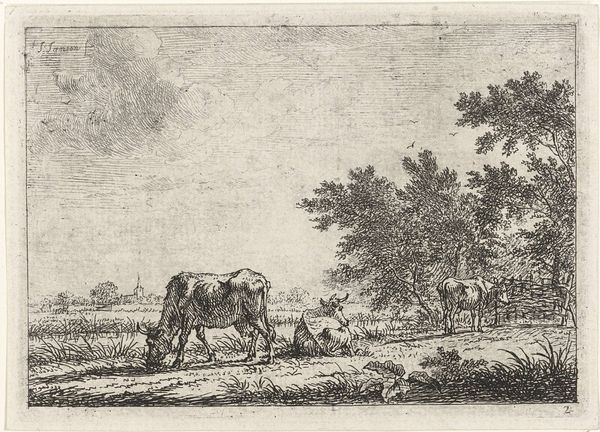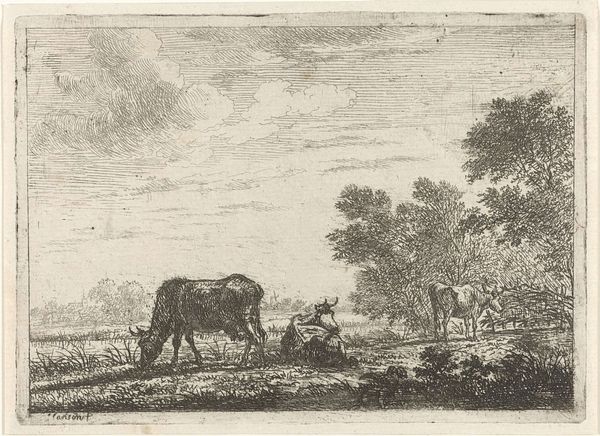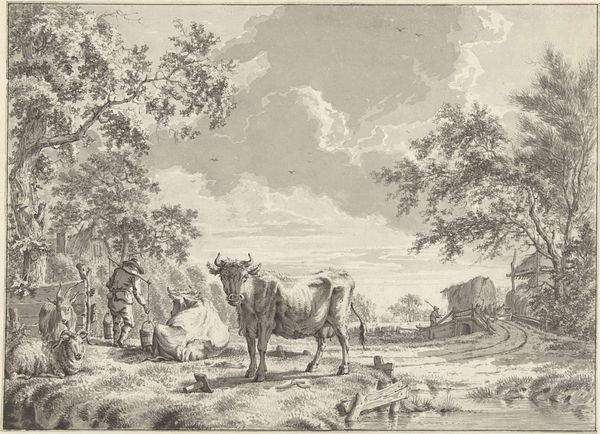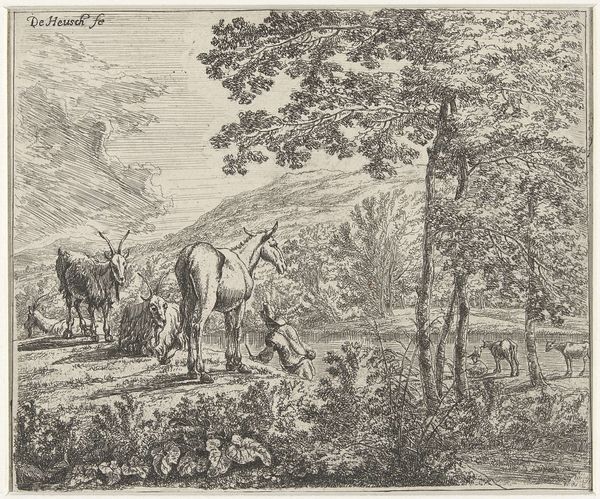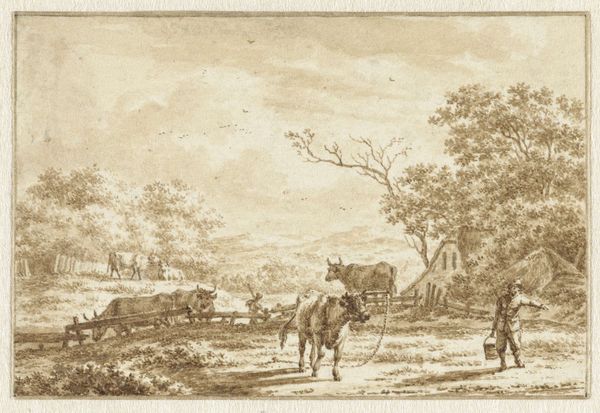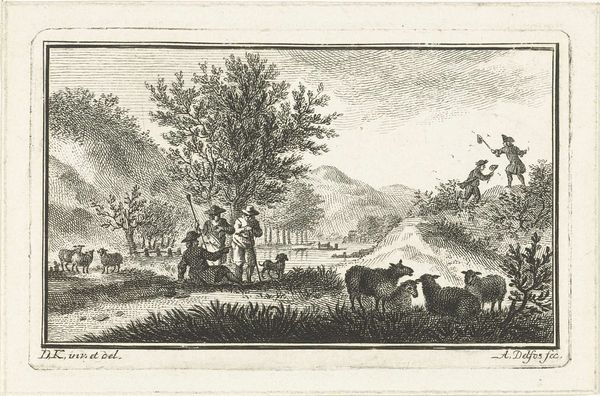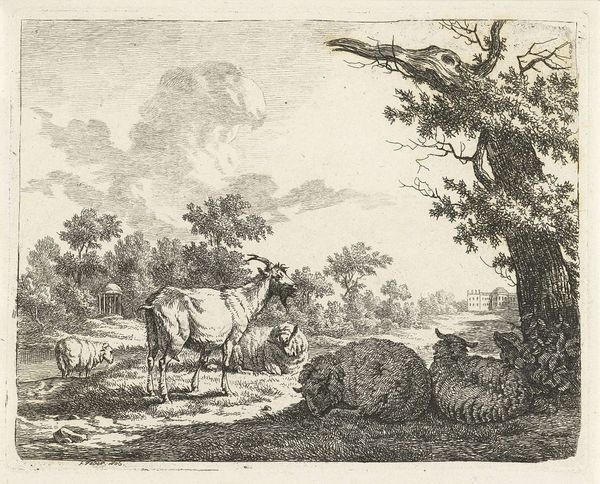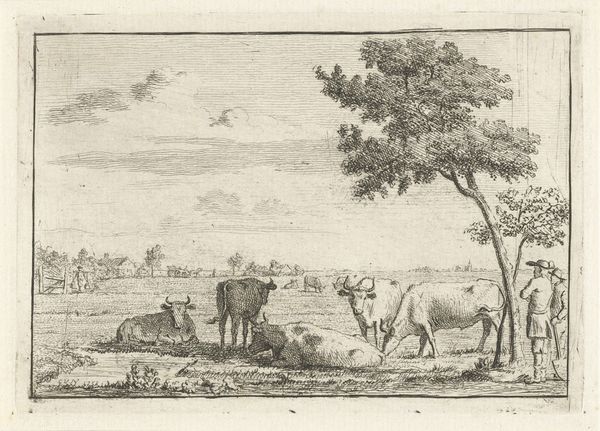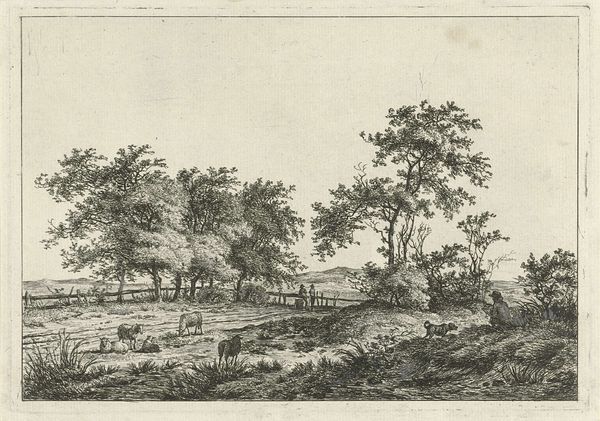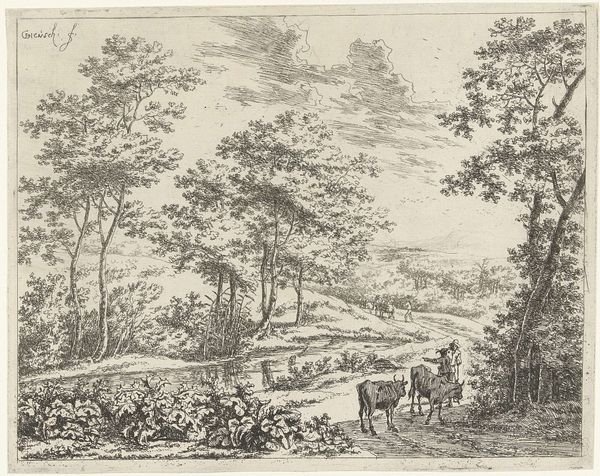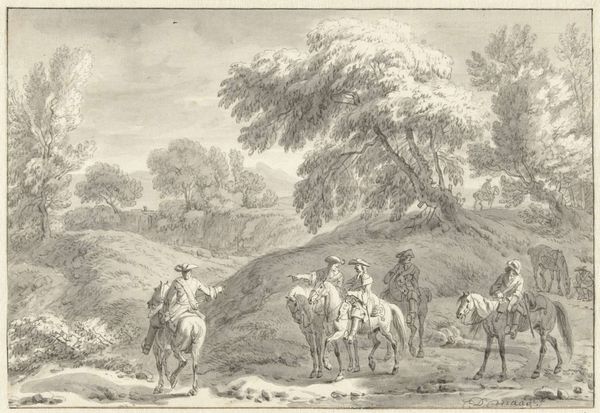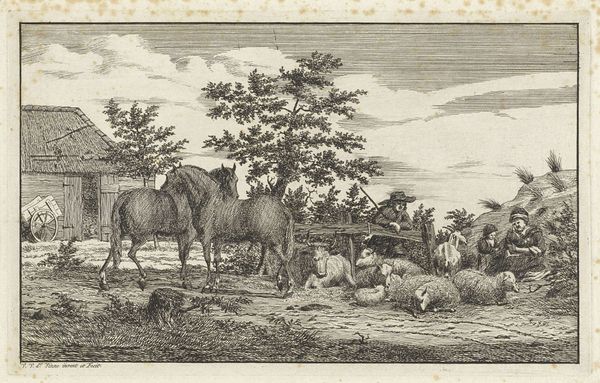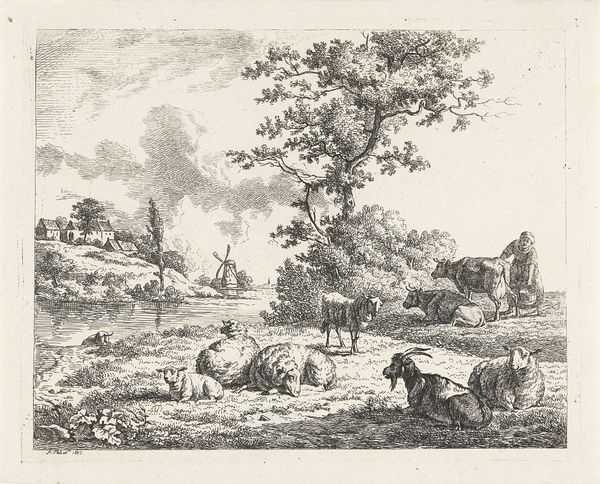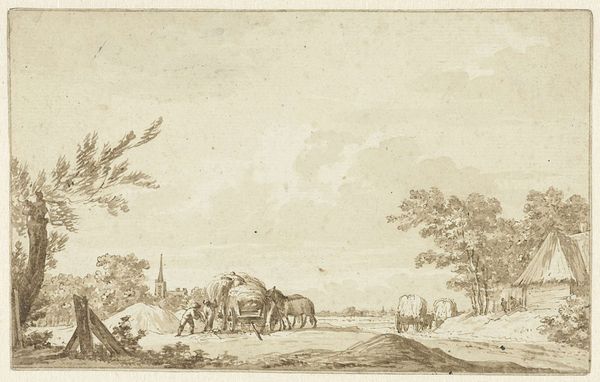
drawing, engraving
#
landscape illustration sketch
#
drawing
#
quirky sketch
#
baroque
#
mechanical pen drawing
#
pen illustration
#
pen sketch
#
pencil sketch
#
landscape
#
personal sketchbook
#
pen-ink sketch
#
pen work
#
sketchbook drawing
#
engraving
Dimensions: height 153 mm, width 188 mm
Copyright: Rijks Museum: Open Domain
Curator: Let’s spend a moment with this intriguing engraving, “Landscape with Muleteer Tending to a Mule's Hoof,” created sometime between 1660 and 1699 by Franciscus de Bargas. Editor: My first impression is one of quietude. Despite the implied journey, there's a sense of pause and focused attention on this one small, humble act. Curator: Indeed. When considering the socio-economic context of the time, scenes like this served as reflections of the daily lives of ordinary people—a rarity in art before the rise of genre painting. We see not idealized figures, but laborers facing everyday challenges. How does this resonate with contemporary issues of labor rights and social justice, the value placed on different types of work? Editor: That’s a sharp insight. But my mind went to the visual symbolism at play. The mule, a beast of burden, is being cared for—almost reverentially—suggesting the inherent dignity in both labor and the creature itself. Consider, too, the dogs at rest and alert. In classical symbolism, they often point to trust and devotion but also to social strata; they are guarding, belonging. Curator: Interesting points. What strikes me is how Bargas disrupts traditional landscape art by shifting our focus. It's no longer about grand vistas but rather about a very specific scene loaded with a subtle commentary about social hierarchies of the time. Note that the driver is bending over. The very class differences are suggested by posture. Editor: Agreed. The careful detail he renders in the textures of the animals, people, and trees, against the looser background, creates a clear visual narrative. A single hoof, and by extension, a single man can create or prevent a journey. His future security relies upon it. It gives that detail a weight and gravity out of proportion with its immediate size and placement within the frame. It hints at more universal, eternal patterns. Curator: Seeing how these enduring social themes of labor, dignity, and interconnectedness—of animals, people, and even social station are relevant today only serves to deepen my appreciation. Thanks for pointing out that balance of the specific moment within the broad perspective, using cultural cues and historical precedent to do so. Editor: And you reframed the very notion of a simple landscape, reminding us that art has always engaged with politics, economics, and even, hope for repair.
Comments
No comments
Be the first to comment and join the conversation on the ultimate creative platform.
